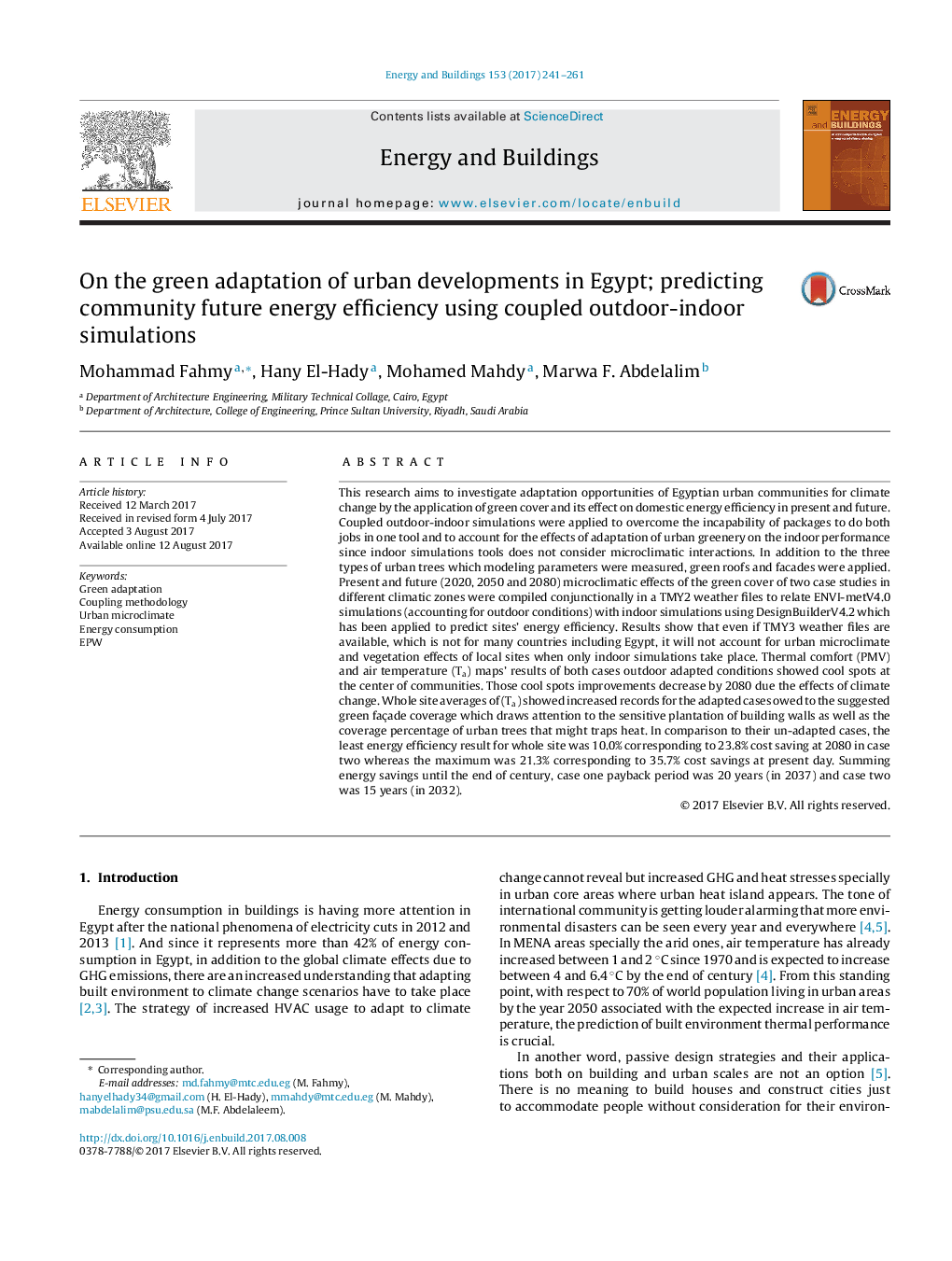| کد مقاله | کد نشریه | سال انتشار | مقاله انگلیسی | نسخه تمام متن |
|---|---|---|---|---|
| 4918985 | 1428937 | 2017 | 21 صفحه PDF | دانلود رایگان |
عنوان انگلیسی مقاله ISI
On the green adaptation of urban developments in Egypt; predicting community future energy efficiency using coupled outdoor-indoor simulations
ترجمه فارسی عنوان
در انطباق سبز پیشرفت های شهری در مصر؛ پیش بینی کارآیی انرژی آینده در جامعه با استفاده از شبیه سازی در فضای باز داخلی
دانلود مقاله + سفارش ترجمه
دانلود مقاله ISI انگلیسی
رایگان برای ایرانیان
موضوعات مرتبط
مهندسی و علوم پایه
مهندسی انرژی
انرژی های تجدید پذیر، توسعه پایدار و محیط زیست
چکیده انگلیسی
This research aims to investigate adaptation opportunities of Egyptian urban communities for climate change by the application of green cover and its effect on domestic energy efficiency in present and future. Coupled outdoor-indoor simulations were applied to overcome the incapability of packages to do both jobs in one tool and to account for the effects of adaptation of urban greenery on the indoor performance since indoor simulations tools does not consider microclimatic interactions. In addition to the three types of urban trees which modeling parameters were measured, green roofs and facades were applied. Present and future (2020, 2050 and 2080) microclimatic effects of the green cover of two case studies in different climatic zones were compiled conjunctionally in a TMY2 weather files to relate ENVI-metV4.0 simulations (accounting for outdoor conditions) with indoor simulations using DesignBuilderV4.2 which has been applied to predict sites' energy efficiency. Results show that even if TMY3 weather files are available, which is not for many countries including Egypt, it will not account for urban microclimate and vegetation effects of local sites when only indoor simulations take place. Thermal comfort (PMV) and air temperature (Ta) maps' results of both cases outdoor adapted conditions showed cool spots at the center of communities. Those cool spots improvements decrease by 2080 due the effects of climate change. Whole site averages of (Ta) showed increased records for the adapted cases owed to the suggested green façade coverage which draws attention to the sensitive plantation of building walls as well as the coverage percentage of urban trees that might traps heat. In comparison to their un-adapted cases, the least energy efficiency result for whole site was 10.0% corresponding to 23.8% cost saving at 2080 in case two whereas the maximum was 21.3% corresponding to 35.7% cost savings at present day. Summing energy savings until the end of century, case one payback period was 20 years (in 2037) and case two was 15 years (in 2032).
ناشر
Database: Elsevier - ScienceDirect (ساینس دایرکت)
Journal: Energy and Buildings - Volume 153, 15 October 2017, Pages 241-261
Journal: Energy and Buildings - Volume 153, 15 October 2017, Pages 241-261
نویسندگان
Mohammad Fahmy, Hany El-Hady, Mohamed Mahdy, Marwa F. Abdelalim,
